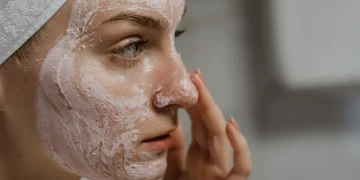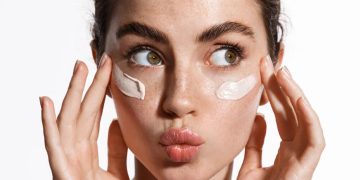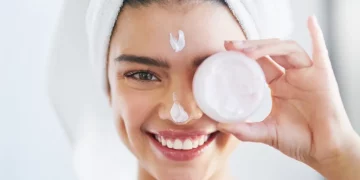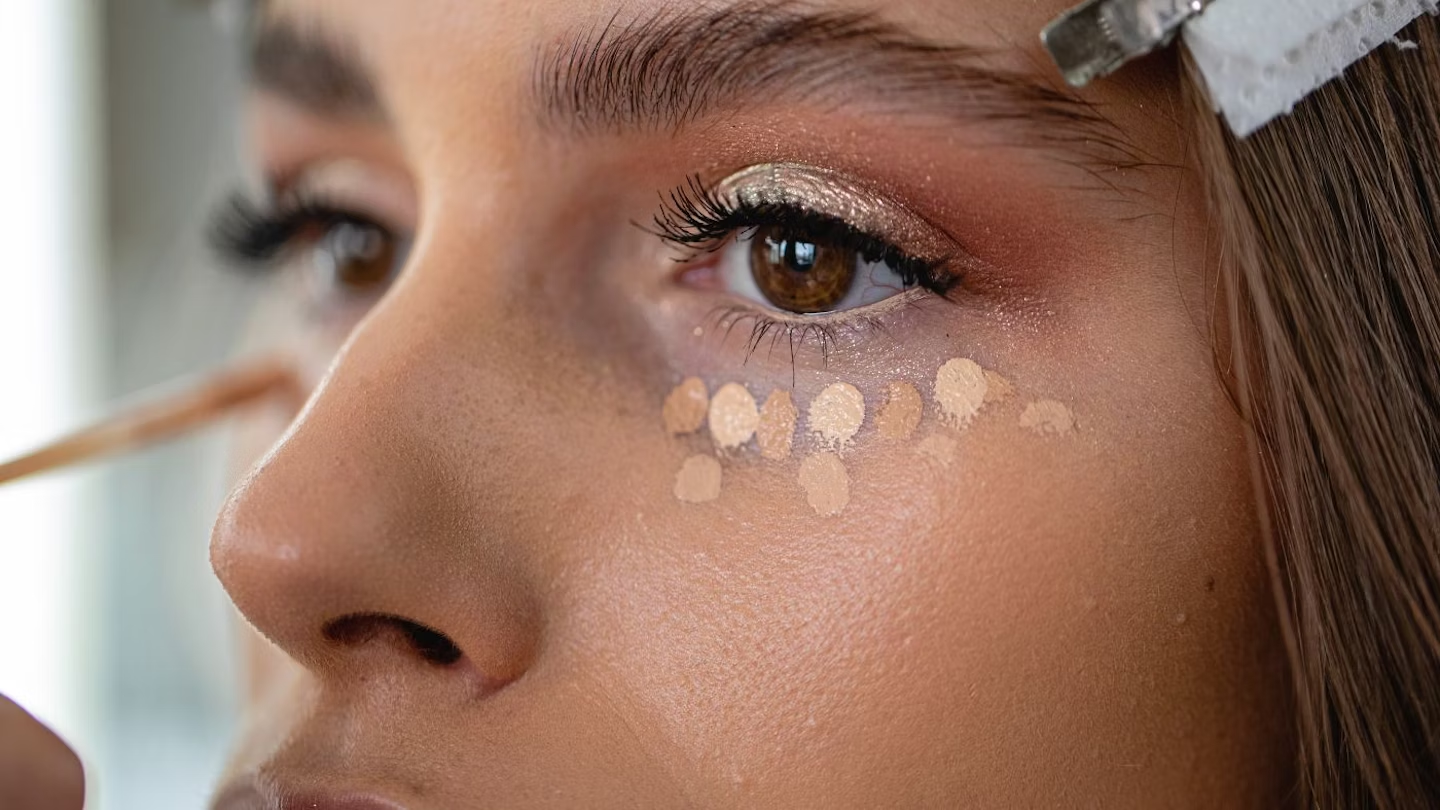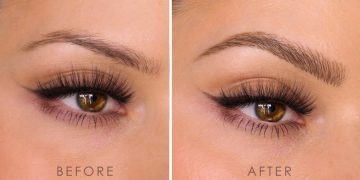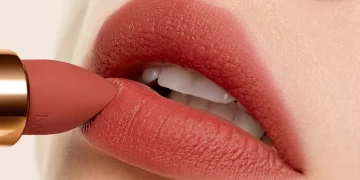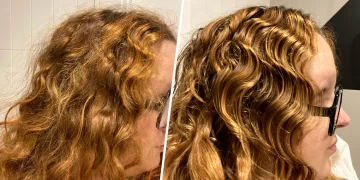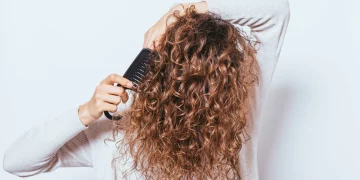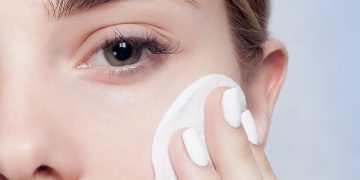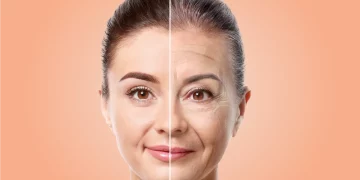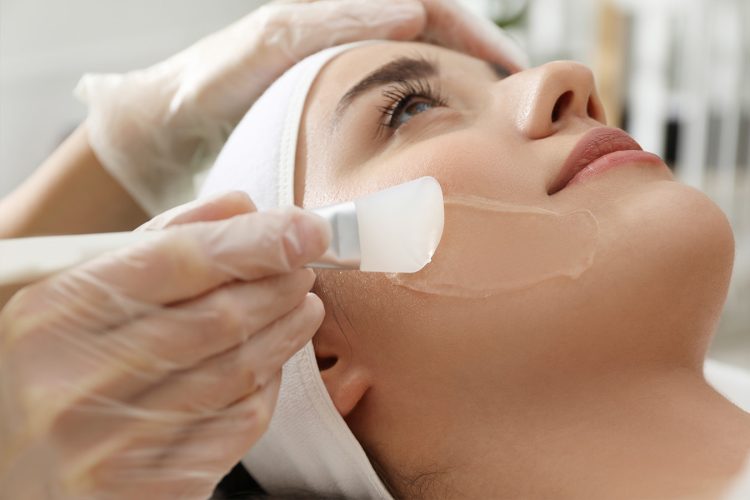Chemical peels have long been one of the go-to treatments for skin rejuvenation. Over the years, this facial treatment has gained immense popularity due to its ability to address a range of skin concerns, from fine lines to acne scars and sun damage. If you’ve ever wondered about chemical peels—how they work, the different types available, and who can benefit from them—then this guide is for you. In this article, we’ll provide an in-depth overview of chemical peels, their benefits, and why they’re still a favorite in the skincare world.
1. What is a Chemical Peel?
A chemical peel is a cosmetic treatment in which a chemical solution is applied to the skin to exfoliate the outermost layers. The solution causes the skin to “peel” off, revealing smoother, healthier, and more youthful skin underneath. Chemical peels come in different strengths—mild, medium, and deep—and the type of peel used will depend on your skin type and the skin issue being treated.
2. How Do Chemical Peels Work?
The chemical solution used in a peel typically contains one or more active ingredients like alpha hydroxy acids (AHAs), beta hydroxy acids (BHAs), or trichloroacetic acid (TCA). These chemicals work by dissolving dead skin cells and promoting the shedding of damaged or aging skin layers. The procedure encourages the skin to regenerate itself, boosting collagen production, which improves skin texture, elasticity, and overall appearance.
The Process of a Chemical Peel
The procedure typically involves the following steps:
- Cleansing: The skin is first cleaned thoroughly to remove any dirt, oils, or makeup.
- Application of the Peel: The chosen chemical solution is applied to the skin. Depending on the strength of the peel, you may feel a tingling or burning sensation, but it’s generally well-tolerated.
- Time for the Solution to Work: The solution is left on the skin for a specific amount of time, usually between 5 to 15 minutes.
- Neutralization and Removal: After the solution has been allowed to work, the chemical peel is neutralized and removed. This can be done with water or other neutralizing agents.
- Aftercare: The skin will be moisturized, and sunscreen is applied to protect it from UV damage.
3. Types of Chemical Peels
There are three main types of chemical peels, each varying in strength and depth of skin penetration.
1. Superficial Peels
- What it Treats: Superficial peels are the mildest type of chemical peel and are ideal for treating superficial skin issues like mild acne, dry skin, and rough texture. They can also be used to brighten dull skin or help with minor pigmentation concerns.
- Ingredients Used: Glycolic acid or salicylic acid is commonly used in superficial peels.
- Recovery Time: Little to no downtime is needed after a superficial peel. You may experience mild redness or irritation for a few hours, but it typically resolves quickly.
2. Medium Peels
- What it Treats: Medium peels target deeper skin concerns, such as fine lines, wrinkles, sun spots, and moderate acne scars. They penetrate deeper into the skin and are often used for people seeking more noticeable skin resurfacing.
- Ingredients Used: Trichloroacetic acid (TCA) is typically used for medium-depth peels.
- Recovery Time: Recovery time is longer than that of a superficial peel. You may experience peeling, redness, and swelling for several days following the treatment. The skin will usually heal within a week.
3. Deep Peels
- What it Treats: Deep peels are the strongest option and are used for significant skin concerns such as deep wrinkles, severe acne scars, or sun damage. They provide the most dramatic results but also require the most recovery time.
- Ingredients Used: Phenol or high-strength TCA is used for deep peels.
- Recovery Time: Deep peels have the longest recovery time. You can expect redness, swelling, and peeling for up to two weeks, and your skin may be more sensitive to the sun for several months after the procedure.
4. Benefits of Chemical Peels
Chemical peels can offer a multitude of benefits, from improving the texture of the skin to reducing the appearance of scars and wrinkles. Let’s dive deeper into the specific advantages of these treatments.
Skin Rejuvenation
By removing the outermost layers of dead skin cells, chemical peels can help the skin appear more youthful, radiant, and even-toned. The process stimulates the production of new skin cells, leaving you with smoother, brighter skin.
Reduction of Fine Lines and Wrinkles
The exfoliation process of chemical peels promotes collagen production, which is essential for skin elasticity and firmness. This makes chemical peels particularly effective for treating fine lines and wrinkles, especially those caused by aging or sun damage.
Acne and Acne Scar Treatment
Chemical peels are often used as part of acne treatment plans. The exfoliation helps unclog pores, while the active ingredients work to reduce inflammation and prevent future breakouts. For individuals with acne scars, chemical peels can help fade dark spots and smooth the skin’s texture over time.
Hyperpigmentation and Sun Damage
Chemical peels can help treat dark spots, age spots, and uneven pigmentation caused by sun damage or hormonal changes (like melasma). By promoting skin turnover, peels can reduce the appearance of hyperpigmentation and promote a more uniform complexion.
Improved Skin Texture
Chemical peels can improve the texture of the skin, leaving it smoother and softer. If you struggle with rough or bumpy skin, a peel can help smooth out these imperfections and give you a more polished look.

5. Who Should Consider Chemical Peels?
Chemical peels are suitable for most people, but it’s important to assess whether they’re right for your skin type and needs. Generally, individuals with the following skin concerns may benefit from a chemical peel:
- Uneven skin tone and pigmentation: For those struggling with dark spots, sun spots, or general skin discoloration.
- Fine lines and wrinkles: For people looking to reduce the appearance of aging signs.
- Acne-prone skin: If you have acne or acne scars, a chemical peel may help clear your skin and fade scars.
- Sun damage: For those who’ve spent time in the sun and now have age spots, freckles, or rough skin texture.
- Rough skin texture: For people with uneven skin texture or enlarged pores.
It’s important to note that chemical peels may not be suitable for those with certain skin conditions, such as eczema or rosacea. Always consult with a dermatologist before undergoing any treatment to ensure it’s appropriate for your skin.
6. Risks and Side Effects of Chemical Peels
While chemical peels are generally safe when performed by a trained professional, there are some risks and side effects to be aware of:
Skin Irritation
Mild redness, irritation, and peeling are common side effects after a chemical peel, especially with stronger peels. These side effects typically subside within a few days to a week.
Hyperpigmentation or Hypopigmentation
In some cases, chemical peels can cause changes in skin pigmentation, leading to either darkening (hyperpigmentation) or lightening (hypopigmentation) of the skin. This is more common for individuals with darker skin tones.
Scarring
In rare cases, deep chemical peels can cause scarring. It’s essential to follow all aftercare instructions to minimize the risk of scarring.
Sun Sensitivity
After a chemical peel, your skin will be more sensitive to the sun, and you’ll need to take extra precautions to protect your skin from harmful UV rays. Always wear sunscreen and avoid sun exposure for several weeks after your treatment.
7. What to Expect After a Chemical Peel
Recovery time depends on the type of peel you’ve had. Superficial peels require little to no downtime, while medium and deep peels may take several days to heal.
- Superficial Peels: You may experience mild redness or flakiness, which should resolve within a few hours to a few days.
- Medium Peels: Expect several days of peeling, redness, and some swelling. Your skin will begin to shed after a few days.
- Deep Peels: You may experience significant redness, swelling, and peeling for up to two weeks. Your skin will continue to improve over the next few months.
Proper aftercare is essential to ensure the best results. This includes avoiding direct sun exposure, using gentle skincare products, and moisturizing your skin regularly.
Conclusion: Why Chemical Peels Are Still a Top Choice
Chemical peels remain a popular choice for those looking to refresh their skin and address a variety of skin concerns. Whether you’re hoping to reduce the appearance of fine lines, brighten your complexion, or treat acne scars, chemical peels can deliver noticeable results. With advancements in peel formulations and techniques, this treatment has become safer, more accessible, and more effective than ever before. As with any cosmetic treatment, it’s important to consult with a professional to determine the right peel for your skin and ensure you achieve the best possible outcome.

